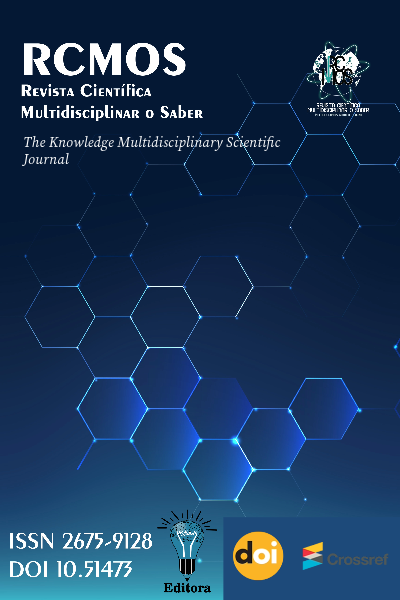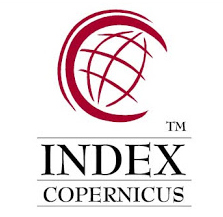Imagem e visibilidade da atleta: mídia e construção de marca
Image and visibility of the athlete: media and brand building
DOI:
https://doi.org/10.51473/rcmos.v1i1.2023.1608Palavras-chave:
branding pessoal; mídia esportiva; mulheres no esporte; interseccionalidade; reputação.Resumo
Este artigo analisa como a mídia tradicional e digital impacta a percepção pública de atletas femininas, influenciando sua visibilidade, reputação e oportunidades de monetização, incluindo patrocínios, acordos de Nome, Imagem e Semelhança (NIL). O método empregado combina uma revisão narrativa de fontes acadêmicas com a análise de estudos de caso, que incluem a Copa do Mundo Feminina da FIFA, a WNBA, a NWSL e modalidades de esportes de combate, além de evidências do setor. Foram detectados desafios frequentes, como a distribuição desigual de recursos, estereótipos relacionados a gênero e raça, disparidades nos contratos, riscos como assédio, crises de imagem, hiperexposição etc. Destacam-se ainda práticas recomendáveis por já terem se desenvolvido no âmbito da representação visual. Sugere-se instrumentos práticos, como Playbook de Marca da Atleta e uma Matriz de Construção de Marca, que apresentam indicadores para aumento de seguidores, taxa de conversão e análise de mídia orgânica, funcionando como um guia útil para atletas, agentes e organizações.
Downloads
Referências
AAKER, D. A. Building strong brands. Free Press, 1996.
BANET-WEISER, S. Empowered: Popular feminism and popular misogyny. Duke University Press, 2018. DOI: https://doi.org/10.1515/9781478002772
BOURDIEU, P. The forms of capital. In: RICHARDSON, J. (Ed.). Handbook of theory and research for the sociology of education. Greenwood, 1986. p. 241–258.
COOKY, C.; MESSNER, M. A.; MUSTO, M. “It’s dude time!”: A quarter century of excluding women’s sports in televised news and highlight shows. Communication & Sport, v. 3, n. 3, p. 261–287, 2015. DOI: https://doi.org/10.1177/2167479515588761 DOI: https://doi.org/10.1177/2167479515588761
CRENSHAW, K. Mapping the margins: Intersectionality, identity politics, and violence against women of color. Stanford Law Review, v. 43, n. 6, p. 1241–1299, 1991. DOI: https://doi.org/10.2307/1229039 DOI: https://doi.org/10.2307/1229039
DAVENPORT, T. H.; BECK, J. C. The attention economy: Understanding the new currency of business. Harvard Business School Press, 2001.
ENTMAN, R. M. Framing: Toward clarification of a fractured paradigm. Journal of Communication, v. 43, n. 4, p. 51–58, 1993. DOI: https://doi.org/10.1111/j.1460-2466.1993.tb01304.x DOI: https://doi.org/10.1111/j.1460-2466.1993.tb01304.x
GEURIN, A. N.; BURCH, L. M. User-generated branding via social media: An examination of six running brands. Sport Marketing Quarterly, v. 25, n. 2, p. 61–71, 2016.
GEURIN, A. Elite female athletes’ perceptions of new media use relating to their careers: A qualitative analysis. Journal of Sport Management, v. 31, n. 4, p. 345–359, 2017. DOI: https://doi.org/10.1123/jsm.2016-0157 DOI: https://doi.org/10.1123/jsm.2016-0157
HENRIKSEN, K. et al. Consensus statement on improving the mental health of high-performance athletes. International Journal of Sport and Exercise Psychology, v. 18, n. 5, p. 553–560, 2020. DOI: https://doi.org/10.1080/1612197X.2019.1570473 DOI: https://doi.org/10.1080/1612197X.2019.1570473
INTERNATIONAL OLYMPIC COMMITTEE (IOC). Portrayal Guidelines: Balanced portrayal of athletes in the media. 2022. Disponível em: https://olympics.com
. Acesso em: 29 out. 2025.
JUDELMA, J.; SANDERSON, J. The NIL era: Reconfiguring athlete branding in college sports. International Journal of Sport Communication, v. 15, n. 2, p. 189–201, 2022. DOI: https://doi.org/10.1123/ijsc.2022-0032
LOBPRIES, J. L.; BENNETT, G.; BRISON, N. T. Utilizing brand personality to examine sport brand relationships. Journal of Sport Management, v. 32, n. 6, p. 540–555, 2018. DOI: https://doi.org/10.1123/jsm.2017-0215
MCCOMBS, M. E.; SHAW, D. L. The agenda-setting function of mass media. Public Opinion Quarterly, v. 36, n. 2, p. 176–187, 1972. DOI: https://doi.org/10.1086/267990 DOI: https://doi.org/10.1086/267990
RATTEN, V. Sport entrepreneurship and innovation: Disrupting the status quo. Journal of Business Research, v. 133, p. 255–259, 2021. DOI: https://doi.org/10.1016/j.jbusres.2021.05.004 DOI: https://doi.org/10.1016/j.jbusres.2021.05.004
SHANE, S.; VENKATARAMAN, S. The promise of entrepreneurship as a field of research. Academy of Management Review, v. 25, n. 1, p. 217–226, 2000. DOI: https://doi.org/10.2307/259271 DOI: https://doi.org/10.5465/amr.2000.2791611
SARASVATHY, S. D. Causation and effectuation: Toward a theoretical shift from economic inevitability to entrepreneurial contingency. Academy of Management Review, v. 26, n. 2, p. 243–263, 2001. DOI: https://doi.org/10.5465/amr.2001.4378020 DOI: https://doi.org/10.2307/259121
Downloads
Publicado
Edição
Seção
Categorias
Licença
Copyright (c) 2023 Larissa de Freitas Coutinho Oliveira (Autor)

Este trabalho está licenciado sob uma licença Creative Commons Attribution 4.0 International License.
Este trabalho está licenciado sob a Licença Creative Commons Atribuição 4.0 Internacional (CC BY 4.0). Isso significa que você tem a liberdade de:
- Compartilhar — copiar e redistribuir o material em qualquer meio ou formato.
- Adaptar — remixar, transformar e construir sobre o material para qualquer propósito, inclusive comercial.
O uso deste material está condicionado à atribuição apropriada ao(s) autor(es) original(is), fornecendo um link para a licença, e indicando se foram feitas alterações. A licença não exige permissão do autor ou da editora, desde que seguidas estas condições.
A logomarca da licença Creative Commons é exibida de maneira permanente no rodapé da revista.
Os direitos autorais do manuscrito podem ser retidos pelos autores sem restrições e solicitados a qualquer momento, mesmo após a publicação na revista.













